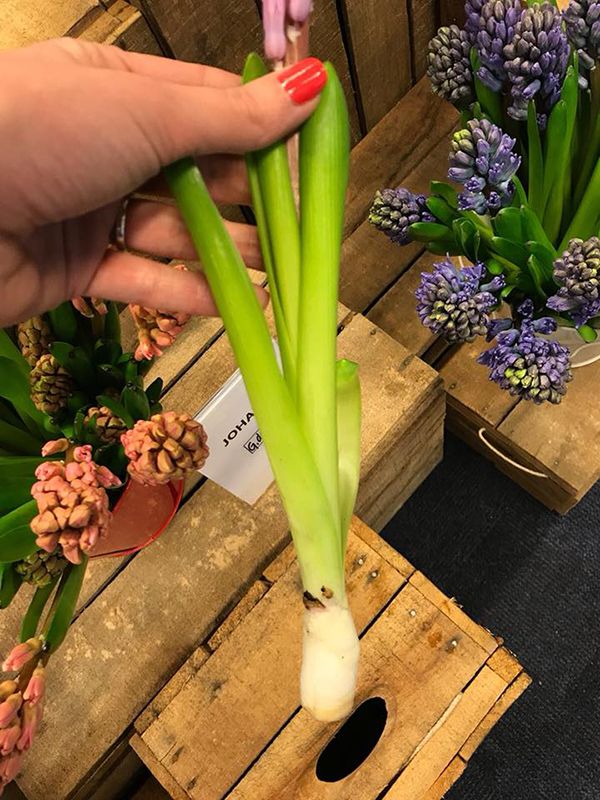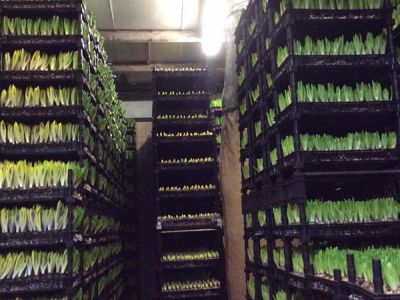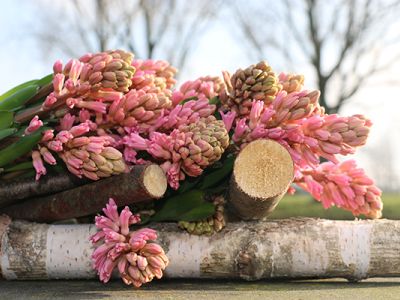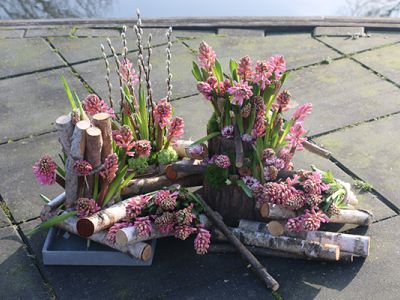Hyacinthus Johanna
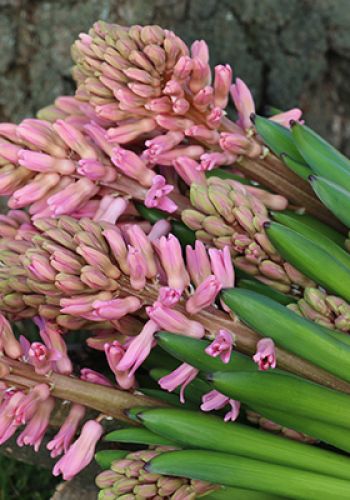
Calendar
Available from December up to and including May
Length: 30/32 centimeter, with a minimum of 30 spikes
Weight: dna
VBN code: 113004
Barendsen colour number: 224 light magenta
In the spotlights
G.deWit & Zn is a family business devoted to the production of high quality cut Hyacinths. Located in Lisse, in the heart of the Netherlands bulb growing area, most of the bulbs cultivated for cut flower production are produced in their own greenhouses.
This ensures the complete control of the growing conditions and the ability to guarantee sustainable production. They have been MPS certified class a/b/c since 2010.
Hyacinth Johanna has strong growth with beautiful deep pink colour and large spikes of flowers. This is a new variety and is only available from G.deWit & Zn and one other grower.
Hyacinth Johanna is grown indoors in crates with plants that are pilled up and kept in a dark cool area [6 deg C] until the plants are around 25 to 30 cm. This takes around two to three weeks. The leaves are yellow when the plants are taken out of the cool area.
The crates are then pilled down and put in an area with light at about 14 degrees Celsius. As a result of the light, the leaves become green and the spikes of the flowers turns pink. They are then kept on tables to further mature prior to harvest. When they are ready for harvest a machine cuts the stems from the bulbs leaving the heart of the bulb at the bottom of the stem (this is important for a long vase life.) Finally they are sorted in bundles of 5 stems and wrapped in a paper package of 25 stems.

Origin
The Hyacinth is a bulb crop belonging to the asparagus family Asparagaceae. Originally the plant is from the Mediterranean Area, [mid of Turkey to Lebanon]. Halfway through the 16th century it came to Europe, [first in France]. The beautiful flower was very exclusive and could only be afforded by the elite and very rich. Fortunately, now it is available to everyone. The Netherlands grows Hyacinths in large volumes so that everybody can take some spring feeling into their homes with this cheerful, sweet scented flower.
The Hyacinth is named after the Mythical Greek prince Hyakinthos. It is a romantic, but rather sad story of the origin of the Hyacinth.
According to this myth, the Sun God Apollo and the Westerly Wind God Zephyros were both in love with prince Hyakinthos. Sadly, for Zephyros, Hyakinthos chose Apollo over him. When Apollo and Hyakinthos were throwing the discus, Zephyros blew the discus off course and Hyakinthos was hit on his head and died.
Apollo was heartbroken. He created from the drops of the blood of his beloved Hyakinthos a little plant named Hyacinth. The flowers were created by his tears.
Apollo buried Hyakinthos’ body on the hills of the temple Amyclae. This temple is approximately 7 kilometres from Sparta. The Greek people have celebrated Hyakinthos’ death with a three-day Festival for thousands of years. On the first day they celebrate the mourning period, the other two days they celebrate the rebirth.
The hyacinth symbolizes sportsmanship and pride, peace and beauty. But because of its origin this flower has a very romantic background. In religion, this lovely and nice smelling flower kept its romantic meaning. Now the Hyacinth has come to mean sweet love. Because of this meaning the flower is very suitable to use for weddings.
In short, this is a beautiful, strong and very sweet-smelling flower. And because of its symbolism, very suitable to give to your true love.
Care
The best temperature for the Hyacinth during transportation and in the flower shop is between 10 and 18 deg C.
Most of the Hyacinths are transported and delivered without water. Prior to arranging in the vase, let them have their fill of water.
Use a clean vase filled with cold water. Do not cut the bottom white part of the stems as this provides rigidity to the flower resulting in a longer vase life and a more intense colour.
FloraPodium, 07 February 2018







